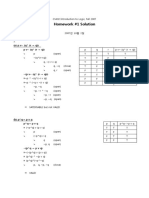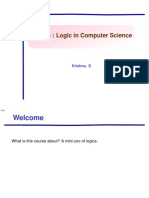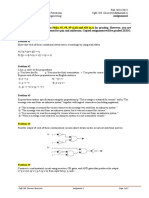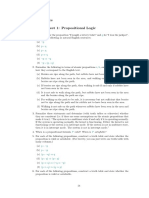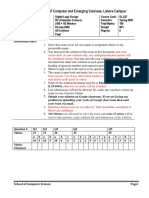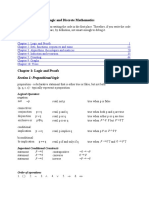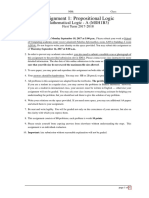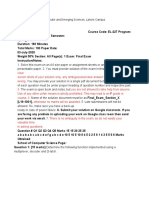0% found this document useful (0 votes)
40 views2 pagesAssignment 2
This document describes Assignment 2 for the course CS F214 Logic in CS. The objective is to develop a tool that verifies whether a proof of a given sequent is valid or not, using 5 specific proof rules: premise, AND introduction/elimination, OR introduction, IMPLIES elimination, and MT. The input and output formats are defined. Documentation requirements include Doxygen code documentation and HTML documentation of the algorithm. The assignment must be done in groups of up to 4 students in C or C++, with a demo scheduled after submission.
Uploaded by
chatgptCopyright
© © All Rights Reserved
We take content rights seriously. If you suspect this is your content, claim it here.
Available Formats
Download as PDF, TXT or read online on Scribd
0% found this document useful (0 votes)
40 views2 pagesAssignment 2
This document describes Assignment 2 for the course CS F214 Logic in CS. The objective is to develop a tool that verifies whether a proof of a given sequent is valid or not, using 5 specific proof rules: premise, AND introduction/elimination, OR introduction, IMPLIES elimination, and MT. The input and output formats are defined. Documentation requirements include Doxygen code documentation and HTML documentation of the algorithm. The assignment must be done in groups of up to 4 students in C or C++, with a demo scheduled after submission.
Uploaded by
chatgptCopyright
© © All Rights Reserved
We take content rights seriously. If you suspect this is your content, claim it here.
Available Formats
Download as PDF, TXT or read online on Scribd
/ 2





